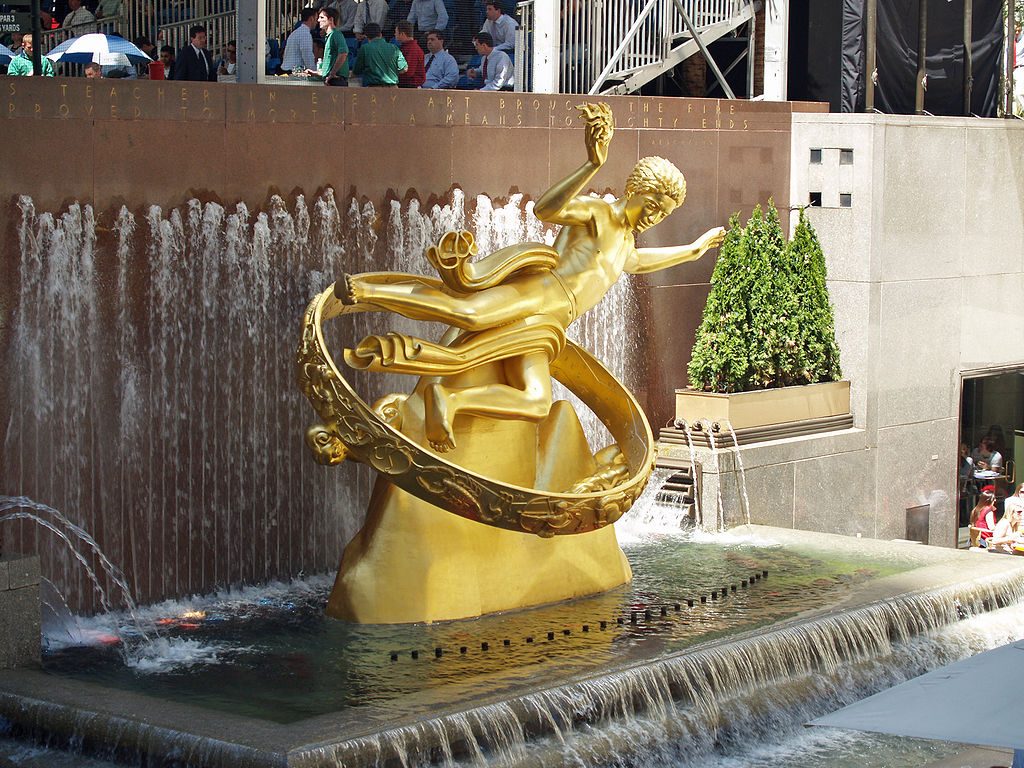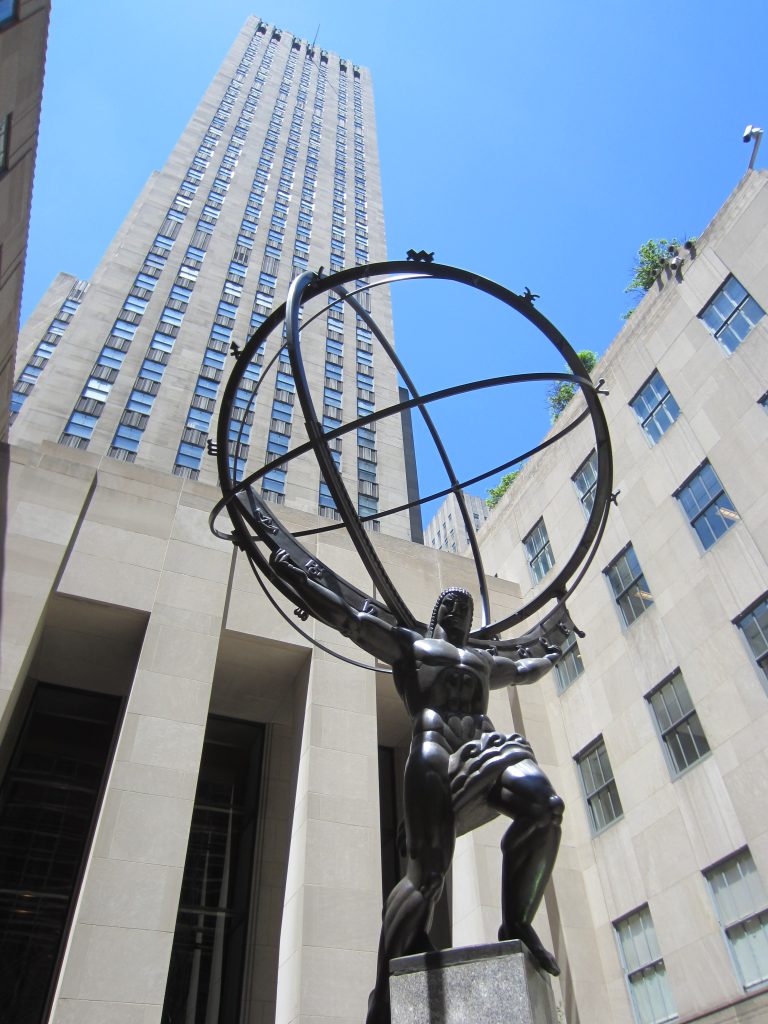Two titans are hiding in plain sight at Rockefeller Center, where Prometheus and Atlas hold prominent positions. Dr. Jared Simard walked us through John D. Rockefeller Jr.’s classical education and tastes. There is so much more to Rockefeller Center than the Christmas Tree, 30 Rock, and Radio City Museum Hall (although I love all of those things). So here are some images and two readings just to help you on your way.
Prometheus and Atlas

Public Domain
Prometheus is also right in the heart of the action. He is right at the foot of the Christmas tree, where the skating rink is positioned during the winter. Prometheus also really looks the classical part, whereas Atlas is looking more and more Art Deco in style, which speaks to the idea that form was perhaps not as important as content. In other words, Atlas’ symbolism and meaning was more important than being classical in style.

Another Believer CC BY-SA 4.0
Atlas occupies some prime real estate at 630 Fifth Avenue and has become a pop culture icon in his own right. He’s even on the cover of certain editions of Atlas Shrugged by Ayn Rand.
Bibliography:
Okrent, Daniel. 2004. Great Fortune: the Epic of Rockefeller Center. New York: Penguin Books.
Simard, Jared. “The Titans of Rockefeller Center: Prometheus and Atlas.” In Classical New York: Discovering Greece and Rome in Gotham, edited by Elizabeth Macaulay-Lewis and Matthew M. McGowan, 140–60. New York: Fordham University Press, 2018.

